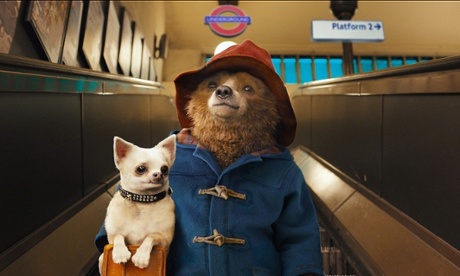
We went on a family outing to see the film of Paddington and all – from grandparents down to a two year old – loved it! It made us wonder about other popular bears in children’s stories. Can you give us other good books about bears?
Bears have long been very popular in children’s books. If you forget that they are actually very big and heavy and can be very fierce, they seem to be remarkably loveable! Part of their popularity may lie in the fact that they walk on two legs and not four which makes them seem closer to humans than some other animals.
There are several popular fictional bears from the past. The best-known across all media is AA Milne’s Winnie-the-Pooh. AA Milne based his famous bear on a stuffed bear called Winnie which belonged to his son Christopher Robin. This toy bear was itself named after a Canadian Black bear whose name referenced his original home in Winnipeg, which Christopher Robin visited in the London Zoo.
Winnie-the-Pooh made his first appearance in print in When We Were Very Young, a collection of poems for the nursery by AA Milne. This was followed by two collections of stories about him; Winnie-the-Pooh and The House at Pooh Corner.
For the stories, AA Milne’s created a wonderful cast of other animal characters including Rabbit, Kanga, Tigger and Eeyore the donkey. AA Milne’s bear was extremely popular from when it was first published and later became a household name world-wide as one of Disney’s largest and most-successful franchises.
Created at almost the same time but in a very different style Mary Tourtel’s Rupert Bear, a humanised bear who dressed like a smart young boy. Rupert first appeared in a strip cartoon in a daily newspaper. Like Winnie-the-Pooh, he grew to have a loyal following first among readers of the newspaper and later with audiences who came across him in other media.
Michael Bond created Paddington in 1958, almost thirty years after the two famous forebears but, like them, he quickly attracted a loyal following. Paddington was inspired by a bear which Michael Bond saw abandoned on a shelf in a shop. His clever representation of the bear as both convincingly “bearish” with his origins in Darkest Peru and semi-human with his love for marmalade and attempts to live comfortably alongside a family, made him instantly loveable.
More bear but still with human characteristics is Rudyard Kipling’s Baloo, the sloth bear who appears in The Jungle Book. In Kipling’s story, and especially in Disney’s version on film, Baloo is a kind and fun-loving mentor to Mowgli, the boy child. Kipling describes Baloo’s greatest treat as being a feast of termites and ants – as a vegetarian he is certainly not as threatening as bear as some can be!
Other books about bears include Sheila Lavelle’s Ursula Bear, the delightful story of a little girl who can turn herself into a bear with the help of a magic spell she has learnt from a library book and Gill Lewis’s Moon Bear, the story of a young boy’s fight to save a bear cub from a cruel future on a bear farm.
Of course after watching Paddington at the cinema, you can go on to read his other many other adventures in some or all of Michael Bond’s 26 Paddington adventure books. His latest Love from Paddington, a collection of letters from Paddington to his Aunt Lucy (yes Paddington in first person!) gives a whole new angle on Padders!
Do you have a question for the Book Doctor? Email childrens.books@theguardian.com or pose it on Twitter @GdnchildrensBks using #BookDoctor. If you are under 18 and not a member of the Guardian children’s books join here, we’re packed full of book recommendations and ideas.

